Sweatsuits have evolved from simple gym wear to a fashion staple, blending comfort and style effortlessly. This transformation has been driven by various factors, including the rise of athleisure, celebrity endorsements, and the increasing demand for versatile clothing. In this article, we will explore the market overview of sweatsuits, highlighting their growing popularity and the key trends shaping the industry.
Table of Contents:
– Market Overview: The Rise of Sweatsuits in the Apparel Industry
– The Evolution of Sweatsuit Styles: From Gym Wear to Fashion Statements
– Material Matters: Fabrics and Textures Defining Sweatsuits
– Customization and Personalization: Making Sweatsuits Unique
– Seasonal Trends: Adapting Sweatsuits for Different Climates
Market Overview: The Rise of Sweatsuits in the Apparel Industry
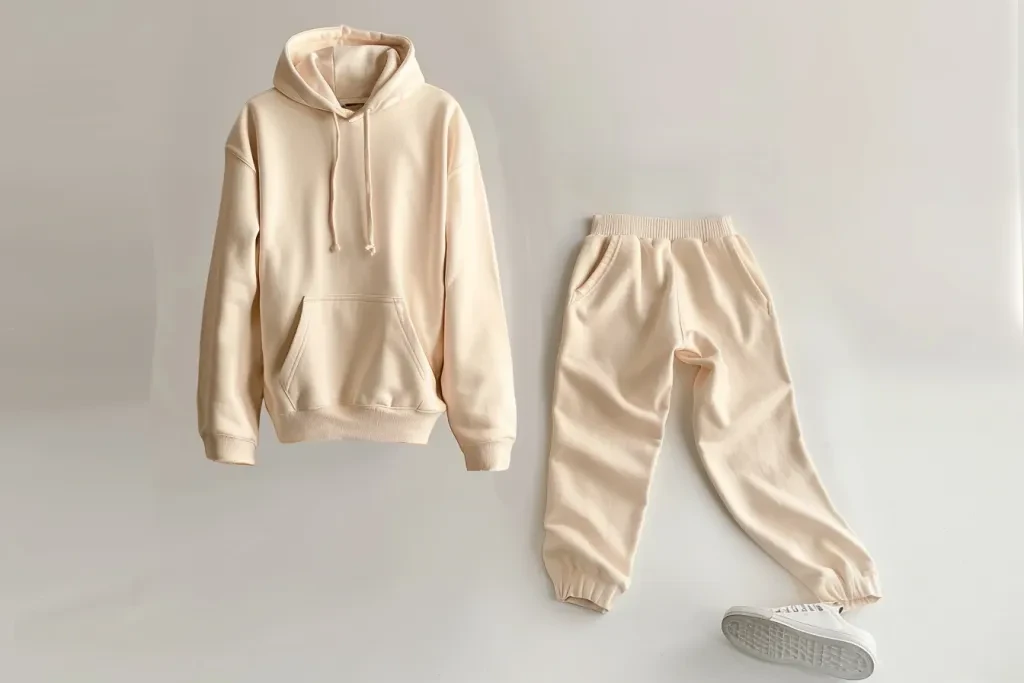
The global athleisure market, which includes sweatsuits, is experiencing significant growth. According to Research and Markets, the athleisure market is forecasted to grow by USD 176.3 billion during 2023-2028, accelerating at a CAGR of 6.79% during the forecast period. This growth is driven by the increasing prominence of online shopping, the adoption of fitness initiatives by corporates, and the rise of the athleisure movement.
Sweatsuits have become a key component of the athleisure trend, which blends athletic wear with casual fashion. This trend has been embraced by consumers seeking comfortable yet stylish clothing that can be worn in various settings, from the gym to social gatherings. The versatility of sweatsuits has made them a popular choice among different demographics, contributing to their widespread adoption.
The market for sweatsuits is also influenced by regional trends. In North America, for instance, the athleisure market is expected to grow significantly, driven by the increasing affluence and disposable income of consumers. According to Statista, the revenue in the Jerseys, Sweatshirts & Pullovers market in the United States is projected to reach USD 9.97 billion in 2024, with an annual growth rate (CAGR 2024-2029) of 8.34%. This indicates a strong demand for comfortable and stylish apparel, including sweatsuits.
Key players in the athleisure market, such as Nike, Adidas, and Under Armour, have been instrumental in driving the popularity of sweatsuits. These brands have leveraged their strong market presence and innovative product offerings to capture the attention of consumers. For example, Adidas’ yoga collection, which includes versatile pieces designed for various aspects of yoga practice, has been well-received by consumers seeking both functionality and style.
Future trends in the sweatsuit market are likely to focus on sustainability and customization. As consumers become more environmentally conscious, there is a growing demand for sustainable and eco-friendly materials in apparel. Brands are responding to this trend by incorporating recycled materials and adopting sustainable manufacturing practices. Additionally, the demand for personalized and customizable sweatsuits is on the rise, with brands offering options for consumers to create unique and tailored pieces.
The Evolution of Sweatsuit Styles: From Gym Wear to Fashion Statements
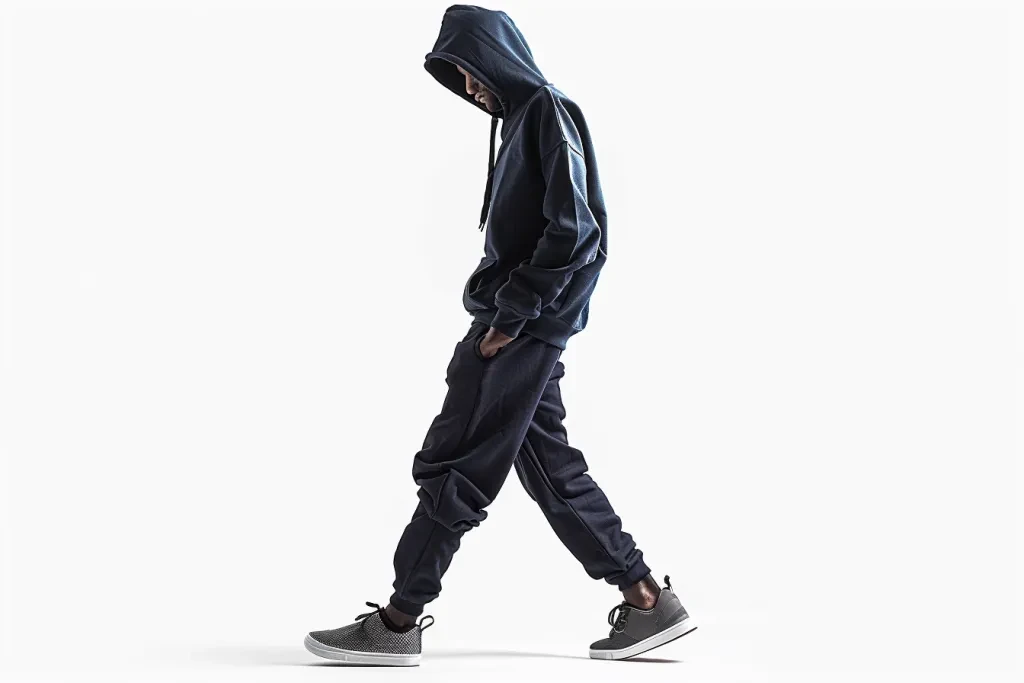
The Transformation of Sweatsuit Designs Over the Decades
Sweatsuits have undergone a remarkable transformation since their inception. Initially designed for athletic purposes, these garments were primarily functional, focusing on comfort and flexibility. In the 1980s, sweatsuits became synonymous with fitness culture, often seen in bright colors and bold patterns. By the 1990s, the influence of hip-hop culture began to shape sweatsuit designs, introducing oversized fits and logo-centric aesthetics.
The 2000s saw a shift towards more streamlined and fitted designs, influenced by the rise of athleisure. Today, sweatsuits are a staple in both casual and high-fashion wardrobes. The modern sweatsuit is characterized by its versatility, with designs ranging from minimalist and monochromatic to elaborate and embellished.
The Influence of Streetwear on Modern Sweatsuit Trends
Streetwear has had a profound impact on the evolution of sweatsuits. The blending of streetwear and high fashion has led to the creation of sweatsuits that are not only comfortable but also stylish and trendy. Brands like Supreme and Off-White have popularized the use of bold graphics, unique colorways, and innovative materials in sweatsuit designs.
According to a report by Launchmetrics, collaborations between streetwear brands and luxury fashion houses have further elevated the status of sweatsuits. The Supreme x Nike collaborations have consistently sold out, highlighting the demand for high-end streetwear. This fusion of streetwear and luxury has made sweatsuits a symbol of contemporary fashion, appealing to a wide range of consumers.
Celebrity Endorsements and Their Impact on Sweatsuit Popularity
Celebrity endorsements have played a crucial role in the popularity of sweatsuits. Celebrities like Kanye West, Rihanna, and Justin Bieber have been spotted wearing sweatsuits, often setting trends and influencing consumer preferences. The endorsement of sweatsuits by high-profile individuals has helped to shift the perception of these garments from mere gym wear to fashionable attire.
Material Matters: Fabrics and Textures Defining Sweatsuits
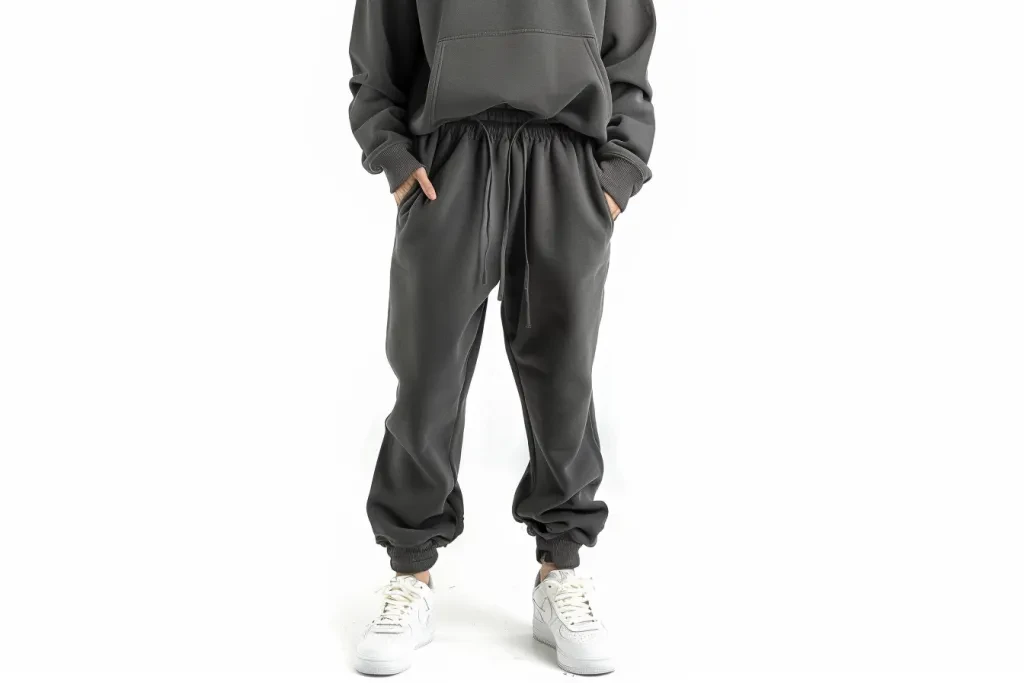
The Shift Towards Sustainable and Eco-Friendly Materials
The fashion industry is increasingly prioritizing sustainability, and sweatsuits are no exception. Brands are now focusing on using eco-friendly materials such as organic cotton, recycled polyester, and Tencel. According to a report by WGSN, the use of sustainable materials in sweatsuit production has increased significantly, driven by consumer demand for environmentally responsible products.
For example, Bandier’s Wesley Collection features sweatsuits made from organic cotton and Tencel, highlighting the brand’s commitment to sustainability. This shift towards eco-friendly materials not only reduces the environmental impact of sweatsuit production but also appeals to the growing number of eco-conscious consumers.
The Role of High-Performance Fabrics in Activewear Sweatsuits
High-performance fabrics have become a key feature of modern activewear sweatsuits. These fabrics are designed to enhance comfort, durability, and functionality, making them ideal for both athletic and everyday wear. Materials such as moisture-wicking polyester, spandex, and technical blends are commonly used in activewear sweatsuits.
According to a report by Launchmetrics, the use of high-performance fabrics in sweatsuits has been driven by the growing popularity of athleisure. Brands like Nike and Under Armour have been at the forefront of this trend, incorporating advanced fabric technologies into their sweatsuit designs to meet the demands of active consumers.
Exploring the Comfort and Aesthetic Appeal of Different Textures
The texture of a sweatsuit can significantly impact its comfort and aesthetic appeal. From plush velour to soft fleece, different textures offer unique sensory experiences and visual effects. According to a report by WGSN, the use of varied textures in sweatsuit designs has become increasingly popular, with brands experimenting with materials like cashmere, wool, and brushed cotton.
For instance, the Loro Piana Cocooning Collection features sweatsuits made from pure cashmere, offering a luxurious and cozy feel. Similarly, Fear of God’s loungewear collection includes sweatsuits made from Egyptian cotton and cashmere, combining comfort with high-end aesthetics.
Customization and Personalization: Making Sweatsuits Unique
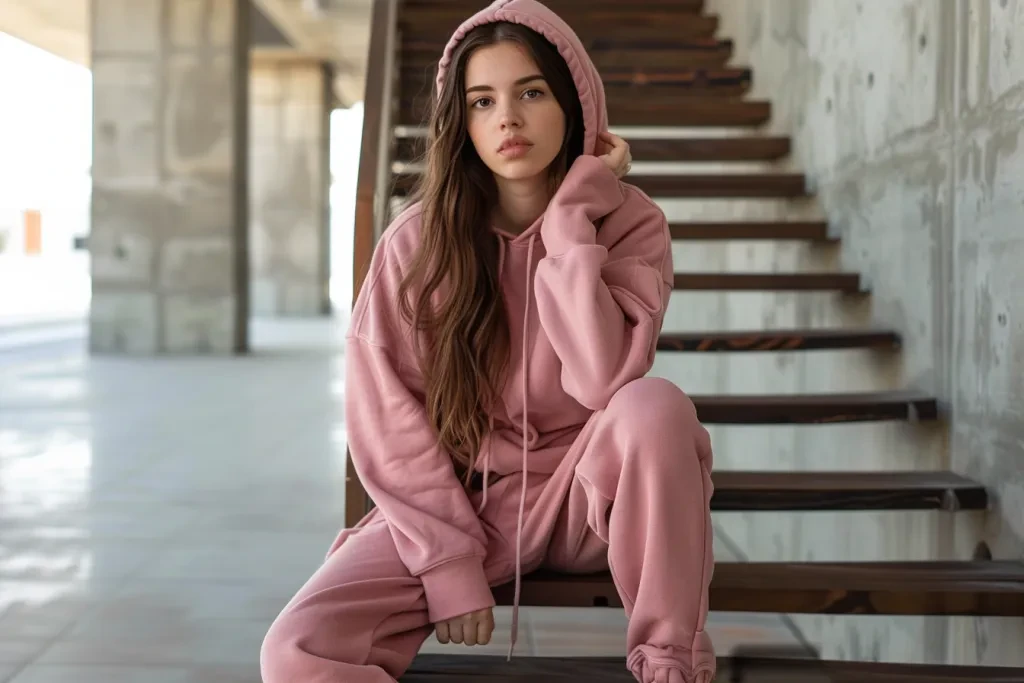
The Growing Demand for Customizable Sweatsuits
Customization has become a significant trend in the fashion industry, with consumers seeking unique and personalized products. Sweatsuits are no exception, with many brands offering customizable options to cater to individual preferences. According to a report by Launchmetrics, the demand for customizable sweatsuits has been driven by the desire for self-expression and individuality.
Brands like Nike and Adidas have capitalized on this trend by offering customization services that allow consumers to choose colors, patterns, and even add personalized text to their sweatsuits. This level of customization not only enhances the appeal of sweatsuits but also fosters a deeper connection between the brand and the consumer.
How Brands are Offering Personalized Options to Consumers
Brands are leveraging technology to offer personalized options for sweatsuits. Online customization tools and interactive design platforms enable consumers to create their own unique sweatsuit designs. According to a report by WGSN, the use of digital customization tools has increased significantly, allowing brands to offer a wide range of personalization options.
The Role of Technology in Enabling Customization
Advancements in technology have played a crucial role in enabling the customization of sweatsuits. Digital printing, 3D knitting, and laser cutting are some of the technologies that have revolutionized the customization process. According to a report by Launchmetrics, these technologies have allowed brands to offer more intricate and detailed customization options.
Seasonal Trends: Adapting Sweatsuits for Different Climates
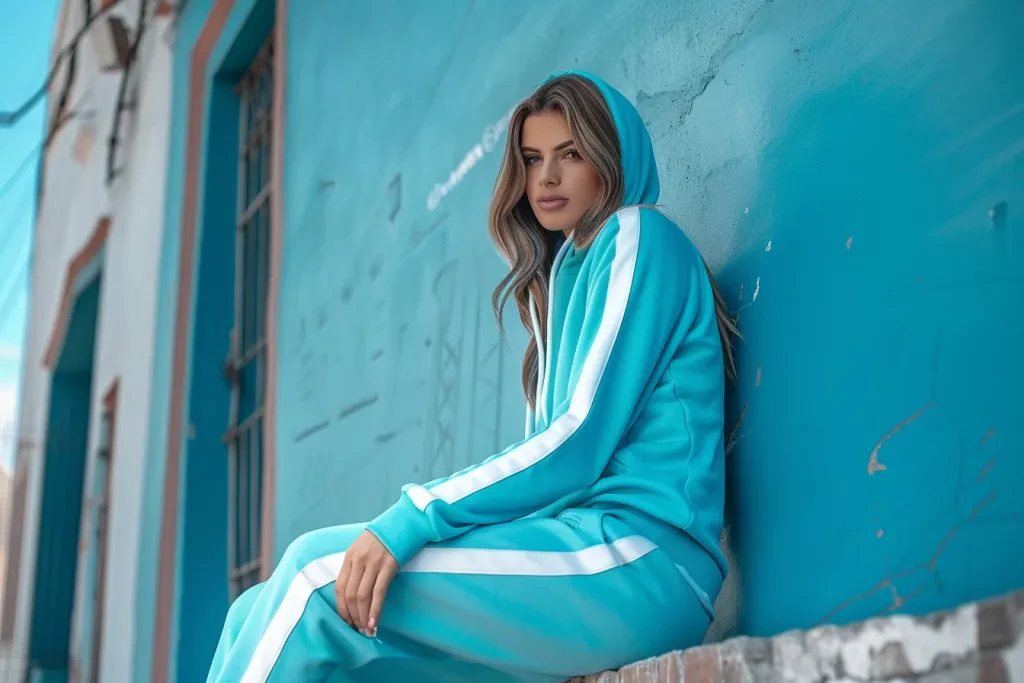
Designing Sweatsuits for Winter Warmth and Summer Coolness
Sweatsuits are designed to be versatile and adaptable to different climates. For winter, brands focus on using insulating materials like fleece, wool, and cashmere to provide warmth and comfort. According to a report by WGSN, the use of double-faced fabrics and thermal linings has become a popular trend in winter sweatsuit designs.
For summer, lightweight and breathable materials like cotton, linen, and moisture-wicking polyester are preferred. Brands like Uniqlo and H&M have introduced summer sweatsuit collections made from these materials, ensuring comfort and coolness in warmer weather.
The Impact of Seasonal Colors and Patterns on Sweatsuit Sales
Seasonal colors and patterns play a significant role in the appeal and sales of sweatsuits. According to a report by Launchmetrics, the use of seasonal colors and patterns can significantly influence consumer purchasing decisions. For winter, darker shades like grey, navy, and black are popular, while summer collections often feature lighter and brighter colors like white, pastel, and neon.
Patterns also vary with the seasons, with winter collections featuring plaids, houndstooth, and other classic patterns, while summer collections often include floral, tropical, and abstract prints. Brands like Zara and Stradivarius have successfully incorporated seasonal colors and patterns into their sweatsuit designs, resulting in high sales and consumer engagement.
How Brands are Innovating to Meet Seasonal Demands
Brands are continuously innovating to meet the seasonal demands of consumers. For example, the use of moisture-wicking and quick-drying fabrics in summer sweatsuits ensures comfort and breathability, while the incorporation of thermal linings and insulating materials in winter sweatsuits provides warmth and protection against the cold. Brands like Nike and Adidas have been at the forefront of these innovations, consistently introducing new technologies and designs to meet the evolving needs of consumers.
Conclusion
The evolution of sweatsuits from gym wear to fashion statements is a testament to the dynamic nature of the fashion industry. As brands continue to innovate and adapt to changing consumer preferences, sweatsuits are likely to remain a staple in both casual and high-fashion wardrobes. The future of sweatsuits lies in the continued exploration of sustainable materials, advanced fabric technologies, and personalized options, ensuring that these garments remain relevant and appealing to a diverse range of consumers.





 বাংলা
বাংলা Nederlands
Nederlands English
English Français
Français Deutsch
Deutsch हिन्दी
हिन्दी Bahasa Indonesia
Bahasa Indonesia Italiano
Italiano 日本語
日本語 한국어
한국어 Bahasa Melayu
Bahasa Melayu മലയാളം
മലയാളം پښتو
پښتو فارسی
فارسی Polski
Polski Português
Português Русский
Русский Español
Español Kiswahili
Kiswahili ไทย
ไทย Türkçe
Türkçe اردو
اردو Tiếng Việt
Tiếng Việt isiXhosa
isiXhosa Zulu
Zulu